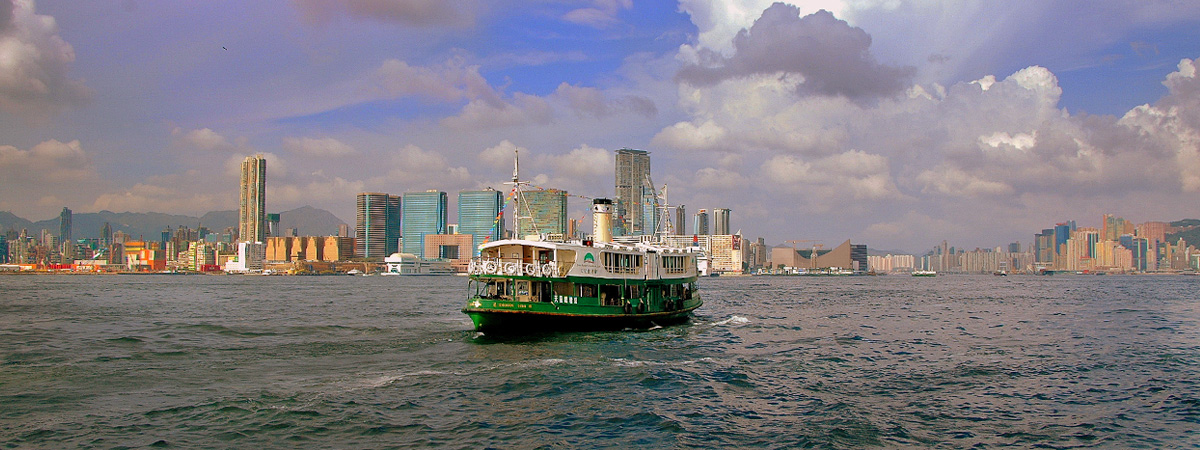Hong Kong combines natural splendour with a forest of skyscrapers on its mountainous peninsula and 200+ islands. In this South China Sea hub trading port, eight million of the planet’s hardest-working people have created a modern-day Genoa. While for visitors, the city’s famously lavish hospitality and vast array of restaurants (16,000 and counting) make Hong Kong a once-in-a-lifetime experience.
Recently, this former British colony has endured hard times; Beijing’s push to reduce political freedoms led to mass protests, and three years of strict Covid lockdown had shaken this beguiling destination. But with stability returning and long-term pandemic restrictions lifted, local expert Steven Knipp tells us that it’s a terrific time to visit the Fragrant Harbour.
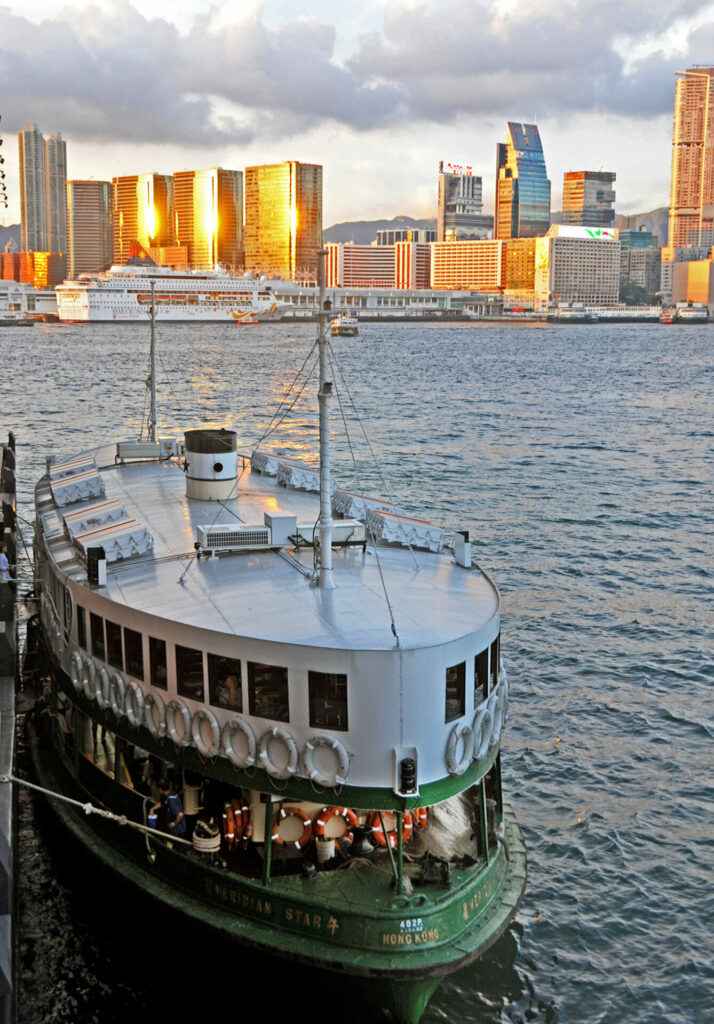
Upon Arrival
After a visitor arrives in my city, I always recommend going straight to the top of Victoria Peak because the view from this airy, 552-metre-high summit is breathtaking. Far below, the city spreads out in a sweeping Hollywood-style panorama, with shimmering Victoria Harbour separating Hong Kong Island itself from Kowloon Peninsula. Look closely, and you’ll see the fat little green-and-white Star Ferry puttering between the two points, carrying 70,000 passengers every day. Come back a second time, after sunset, to watch as millions of city lights reflect on the harbour waters. You can reach “The Peak” — as locals call it — by taxi or bus. But instead, take The Peak Tram, a century-old funicular tram which hauls locals and wide-eyed visitors up the forested mountain by huge steel cables (and near the top, reaches a white-knuckle pitch of 45 degrees).
The best time to be here is from mid-September till early December. The autumn weather is at its most glorious, featuring dry sunny days — it’s warm enough to swim at local beaches, and the sub-tropical air stays toasty even after dark.
I tell first-time travellers to immediately buy an Octopus Smart Card, a reusable electronic stored value card which can be used for all buses, trams, public mini-vans, and inter-island ferries, as well as in countless small shops and cafés. I also tell them to avoid the MTR (Mass Transit Railway) subway system during peak times.
People from here know better than to take the subway system during busy morning or evening rush hours. Instead, they would rather take a brief break from what can otherwise be a hectic urban life and meet up with friends.
The best museum to start your journey and get a good sense of this city is the Hong Kong Museum of History because it tells the story of this former British colony in an engaging, down-to-earth way, so that even young travellers will enjoy it.
Parents should take their kids to the Hong Kong Science Museum, right next door to the Museum of History. See Cathay Pacific’s first DC3 airliner soaring overhead, explore galleries from Electricity and Magnetism to Earth Science, hop into a hands-on car simulator for a drive and marvel at the massive 22-metre Energy Machine; four storeys of dramatic sound and motion.
Food from the Heart
Among the food my city is most proud of, dim sum (‘little hearts’ in Cantonese) is an absolute must. Served from 7am till past noon in hundreds of restaurants, it consists of a nearly endless choice of breakfast treats, both savoury and sweet, either steamed, fried, baked or grilled — charmingly presented to your table in miniature bamboo baskets and always served with local Chinese teas. To enjoy it, I like to go to the posh Summer Palace in the Shangri-La Hotel when I really want to splash out and treat my guests.
When we get together to celebrate, people here traditionally drink Chinese Tsingtao beer, or Philippine San Miguel. I like to gather my friends and go to the Lan Kwai Fong nightlife district for a round, with over 80 bars and restaurants to choose from.
When I eat completely local, I will go to Kam’s Roast Goose restaurant, popular with local families on weekends. I know the food here is simply mouth-watering, the tender goose meat is juicy while the skin is crispy. There will be a wait; but trust me, your taste buds will thank you.
Another two classic, iconic restaurants include glamorous Hutong, renowned for its fiery Sichuan flavours, red lanterns, carved lacquer woods, and jaw-dropping harbour views; and for veggie lovers I recommend Kam Tak Lam Vegetarian, one of the best out of over 200 vegetarian eateries here.
The part of town where locals come for traditional food is Sham Shui Po, in Kowloon, for its cheap and cheery little cafés, serving such favourites as razor clams in black bean sauce or garlic steamed prawns.
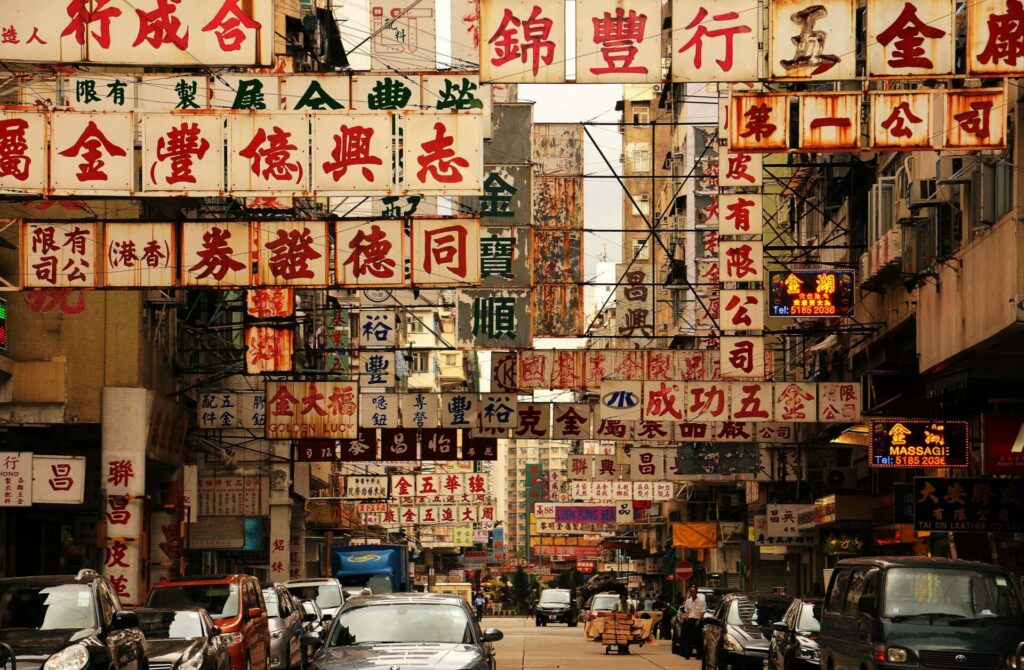
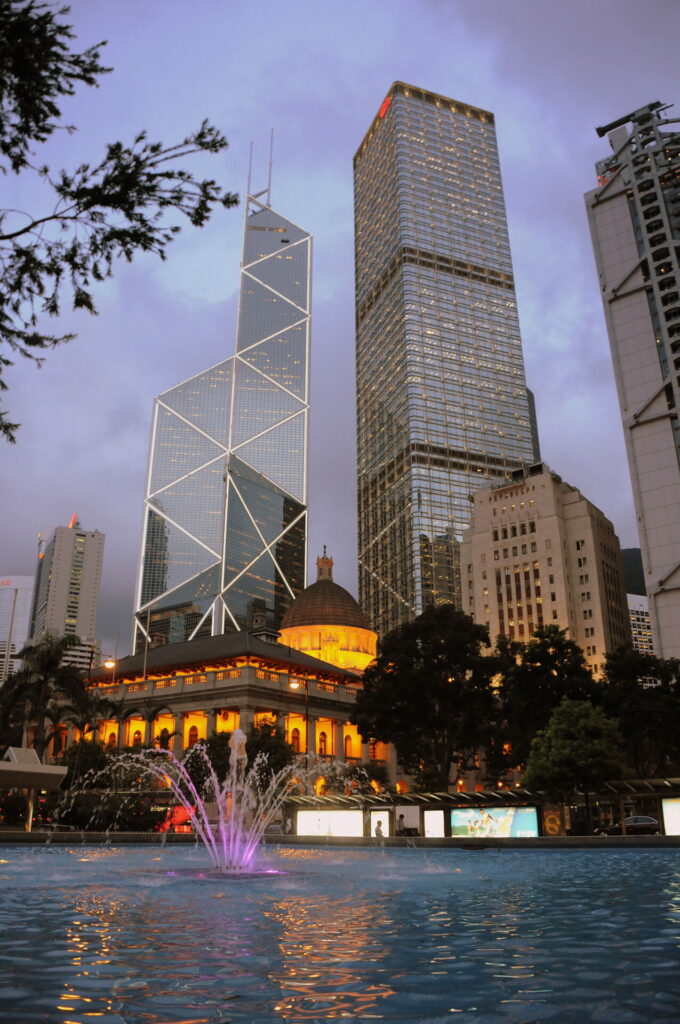
Shopping Locally
Some of the best (as in well-priced) things to buy in Hong Kong include top-end Japanese and German cameras, which are cheaper here than in their country of origin, as well as computers and consumer electronics. Watches, including exclusive European luxury brands, are lower priced here than virtually anywhere in the world. High-end brand-name cosmetics from beauty-obsessed Japan and Korea are also good deals. As is custom-made jewellery using gold or jade. Also, custom tailoring — suits for men and gowns for women — is still a good buy, with a vast selection of fabrics to tempt you. But best to use a recommended tailor and accept no less than three fittings.
The best food market in Hong Kong is the Temple Street Night Market, rightly celebrated for its open-air food stalls (known locally as dai pai dongs), where the sought-after dishes include everything from deep-fried squid and chilli crabs to roasted pigeon.
And the best market to buy local offbeat items like silk PJs, embroidered slippers or the distinctive Chinese cheongsam is the Ladies’ Market, in Mongkok on the Kowloon side. Just be sure never to accept the first price at any of the over a hundred shops and stalls. Instead, bargain, bargain, bargain! And remember the Chinese words for “too expensive” — ho kwai!
To buy real, local souvenirs I always take visitors to Stanley Market, a scenic 45-minute bus ride to the South Side of Hong Kong Island. The products are fun and reasonably priced, and the vibe is friendly, with English-speaking vendors. And we know to avoid hotel gift shops because their prices will make your eyes water.
Getting Deeper Into Hong Kong, China
A great book to learn more about my city is Gweilo: Memories of a Hong Kong Childhood, by Martin Booth; beautifully written and fun to read, it tells the fascinating story of a young British schoolboy growing up in colonial Hong Kong, perfectly capturing what makes this city so endearing to call home.
Most people know about Hong Kong’s famous marble-floored mega malls. But the small shops and stalls in the city’s back streets should also be visited because not only are they more fun to explore but the prices there are often half those in the malls.
My city is a place people are attracted to because of its appearances in many movies and books over the years. The good news: Hong Kong is as exciting in real life as it appears to be on the silver screen or in mystery thrillers.
To celebrate my city at its best, come during the annual Mid-Autumn Moon Festival when visitors get to see the romantic heart of Hong Kong as millions of families and couples swarm the beaches, parks and mountaintops to view the massive orange harvest moon while eating seasonal sweet treats known as ‘moon cakes.’
Most people think of my city as a place to just shop, but really this is a unique destination to experience where East truly meets West; and where old traditions blend perfectly with the latest technologies. Parts of this seaport seem almost ancient, where you can feel the timeless aura of old Asia. But much of it is so very new that you can still taste the scent of wet cement.
This is one of the best places in the world to experience superb service standards in hotels. Locals are proud that our hotels are routinely listed among the world’s absolute best.
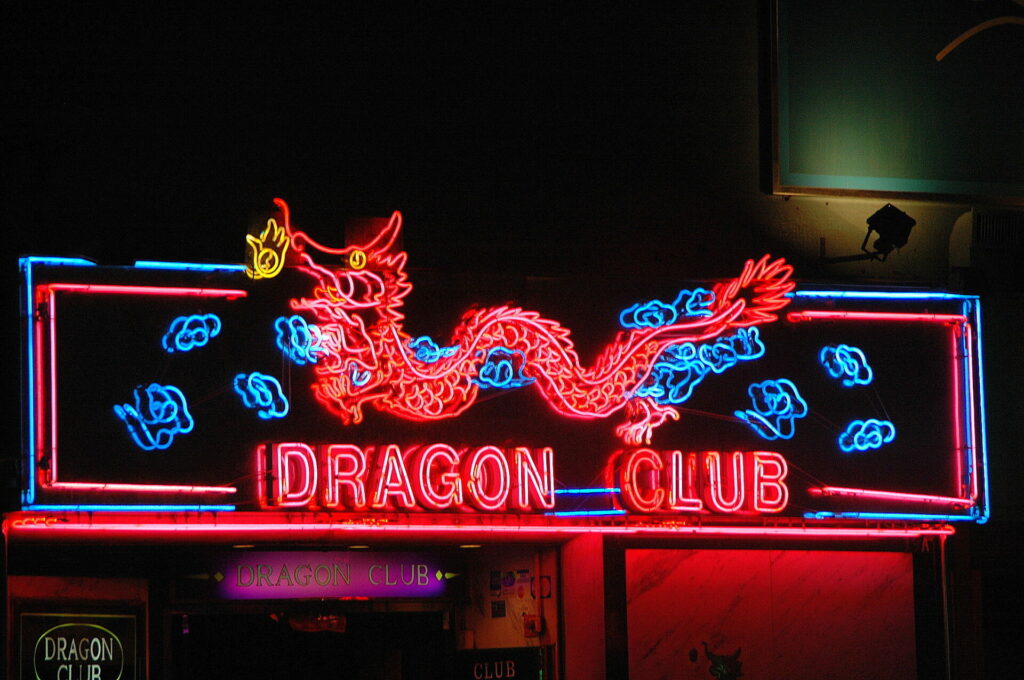
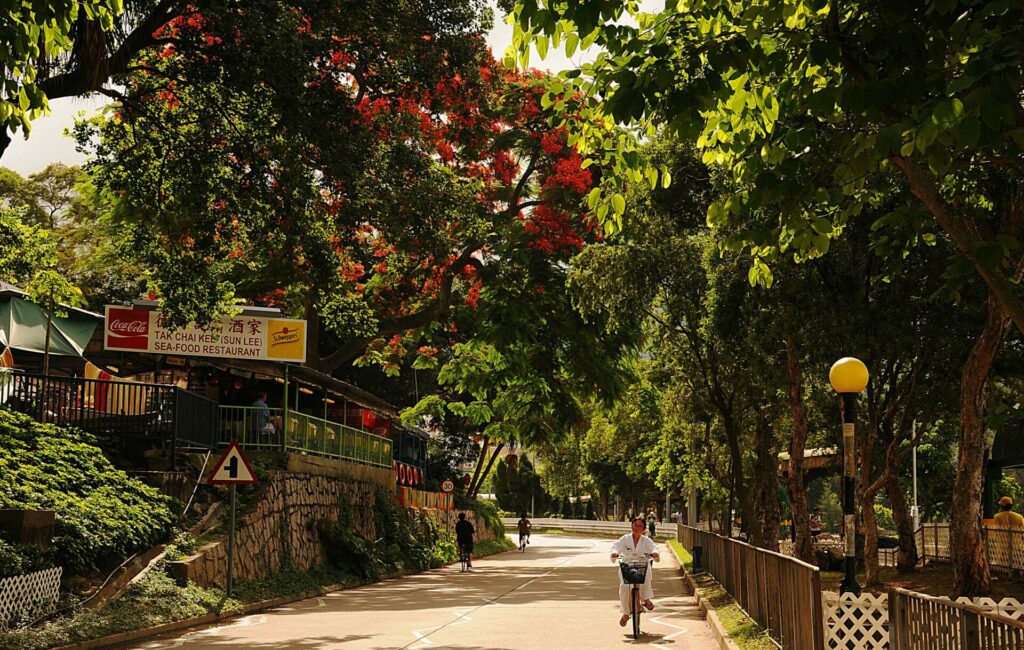
Getting Around Hong Kong
One thing you should know about getting around my city is that local transport choices include everything from double-decker buses and taxis to an extensive Mass Transit Railway (MTR) subway system with 99 stations, plus the funky 120-year-old electric Hong Kong Tramways line; all of them fast, clean, efficient and inexpensive.
The best way to travel in my city to have as little impact as possible is to catch one of the little electric tram cars which run for 30 kilometres along the north coastline of Hong Kong Island.
This method of transportation also allows me to enjoy extensive sightseeing while sitting down. Once you board the little tramcar, head upstairs to the front of the second deck where large open windows give you close-up views of the city’s chaotically cluttered streets, while you leisurely trundle along the tram line. What’s more, since the tram stops every few blocks, if you see something you want to explore — a cool wedding shop, an attractive restaurant, a lively wet market — you can just jump off, then later catch the next passing tram; the fare is almost unbelievably low.
Outside The City
To get away and into the outdoors, I catch a fast ferry out to the Islands District. There are dozens of destinations to choose from, but my favourite is the island of Lantau. Boasting 700-metre-high mountains laced with hiking trails, sweeping beaches, and sleepy coastal settlements with names like Sesame Bay and Cow Bells Village, Lantau also has herds of feral water buffalo, and sea eagles wheeling high overhead.
For a day trip just beyond my city, I like to visit the ancient former Portuguese colony of Macau; situated just across the Pearl River Delta, 60 minutes away by high-speed hydrofoil.
Many people will head straight to Macau’s many casinos, but locals know to go to the enclave’s superb restaurants which serve such unique Macanese dishes as spicy African Chicken, which combines curry with coconut, and lobster-sized grilled South China Sea prawns, served with crisp Portuguese wines.
I really enjoy the view of my city from atop Lion Rock 500 metres above the Kowloon Peninsula, gazing across the harbour towards Victoria Peak.
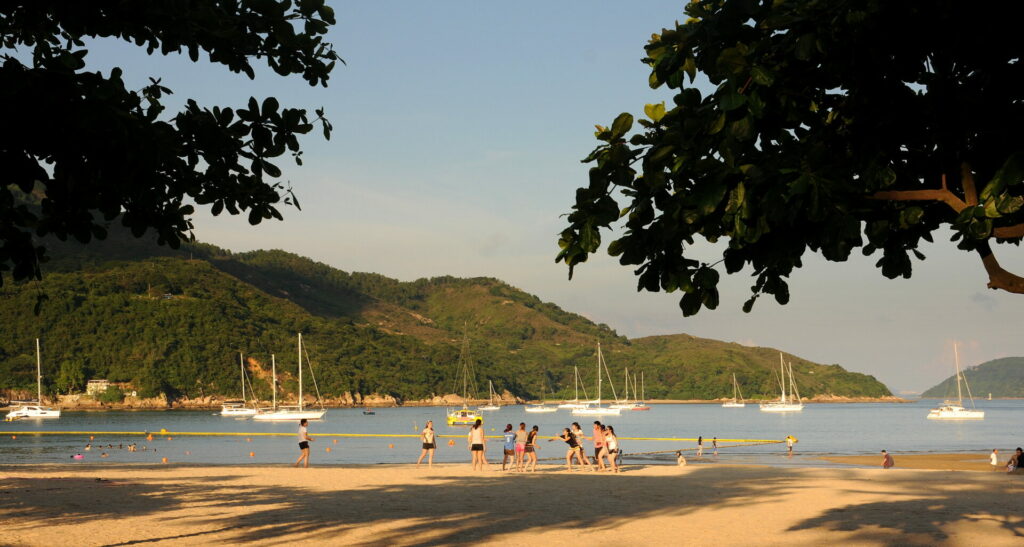
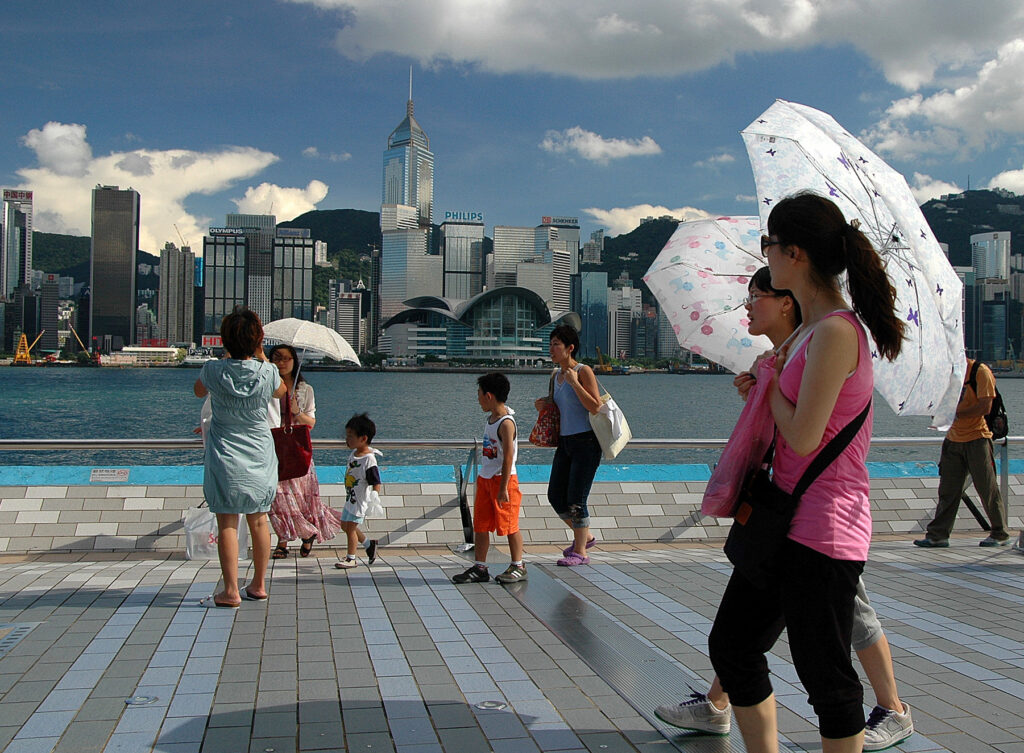
Connecting with Locals
When I want to have fun and celebrate being out in my city, I like to walk along the Kowloon side of Victoria Harbour, along a seaside corniche known as the Avenue of Stars, which offers a stunning view of Hong Kong Island, with the busy shipping traffic just a few metres away.
To hang out with my friends and go to a real insider spot, on weekends I head to the China Bear, a lively pub which sits on the waterfront of Lantau Island’s Silvermine Bay. It offers sweeping views of the glittering lights of Hong Kong Island, great pub grub, and a warm friendly local staff.
The best resource for finding out what’s going on around town is Time Out Hong Kong.
When I want to enjoy my city without spending any money, I simply stroll around the streets of the old Mongkok district with my camera to try and capture some enticing human dramas.
The Wanch is my first choice for music because its live bands play great rock ‘n’ roll, and it’s also a fine gastropub. And when I feel like dancing I go to Insomnia in Lan Kwai Fong, or Carnegie’s in Wanchai.
Finding Solitude in Hong Kong
When I want to go somewhere to sit and relax in my incredible city, I go to Victoria Park early in the morning, to see large gatherings of old folks practising the ancient Chinese exercise of tai chi, or watch elderly men in their pyjamas, as they ‘walk’ their birds (inside small cages).
In my own backyard, I visit serene incense-scented Buddhist temples, including the lofty Po Lin Monastery with its famous giant outdoor Buddha on Lantau (the sprawling island also being home to this writer; I’m lucky like that!).
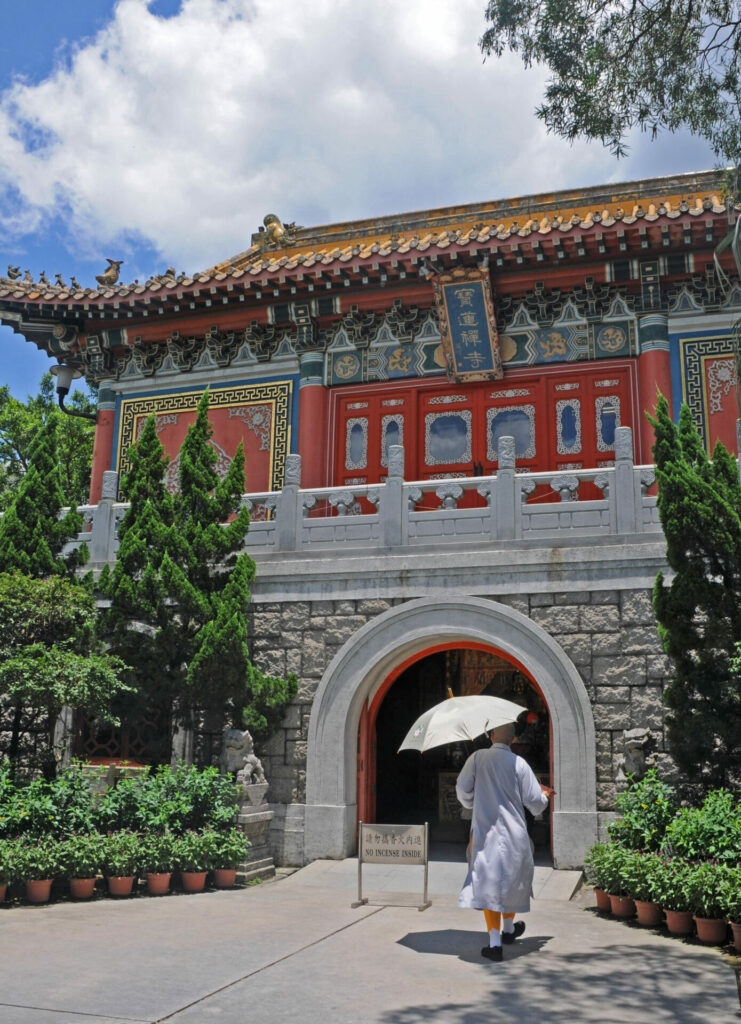
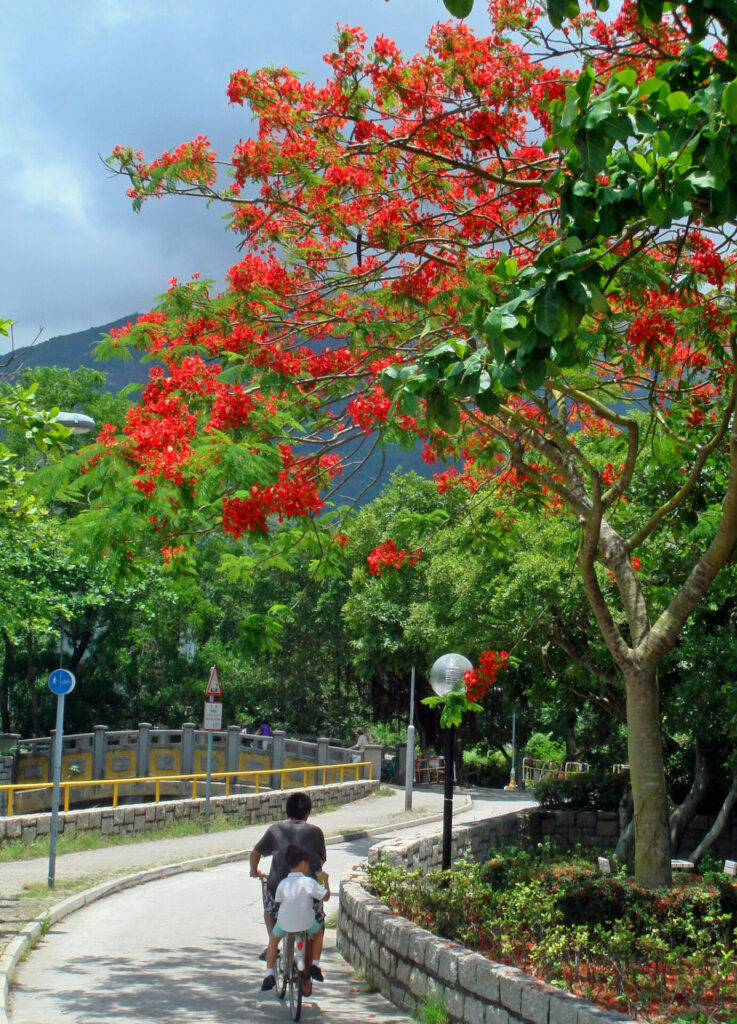
When the Seasons Change, This City Shines
Spring (March till early May) is the best time to visit the many gardens in the public parks here, where newly blooming warm-weather flowers include cherry blossoms, bougainvillea and royal poinciana. And the stunning Flame of the Forest trees gain their amazing fire-engine red canopies.
I always recommend visitors hit the beaches in the summer — which for us is from May until mid-September — because Hong Kong summers can feel like a blast furnace. Among my favourite beaches: Shek O, Repulse Bay, and Big Wave Bay on Hong Kong Island; and Silvermine Bay and Cheung Sha, on Lantau. All five have lifeguards and facilities. Mind the buffalos on Lantau — they like to cool off at the beach just like everyone else. After all, they’re wearing leather in this heat…
The fall (mid-September till mid-December) here is magical when you can feel both the humidity and temperatures steadily drop to enjoyable levels, which makes hiking in the many country parks a welcomed pleasure for urban dwellers, where especially sharp-eyed walkers will often spot shy wild boar or barking deer.
The winter (mid-December through February) is still a wonderful time to hike in the rural countryside. You can still swim at the beaches here, as the water temperatures are warmer than European beaches in July. And there’s even a seasonal reward for all that hardy outdoor winter exercise. I’m talking about Hong Kong’s most popular winter treat and probably my personal favourite eating experience — hot pot.
Whether in a fancy restaurant or on a moonlit beach, the process is the same. We gather around a large circular table, where a boiling pot of soup-like broth sits on a burner in the centre. Surrounding this are dozens of ingredients — from thinly sliced beef, chicken, and lamb to tofu, mushrooms, lettuce. Everyone is their own chef, as each diner (politely) grabs an item with chopsticks, dips it into the bubbling broth, pulls it out, dips it into their choice of sauces — then pops it into their mouth! Always served with cold beer, a meal can take more than two happy hours.

